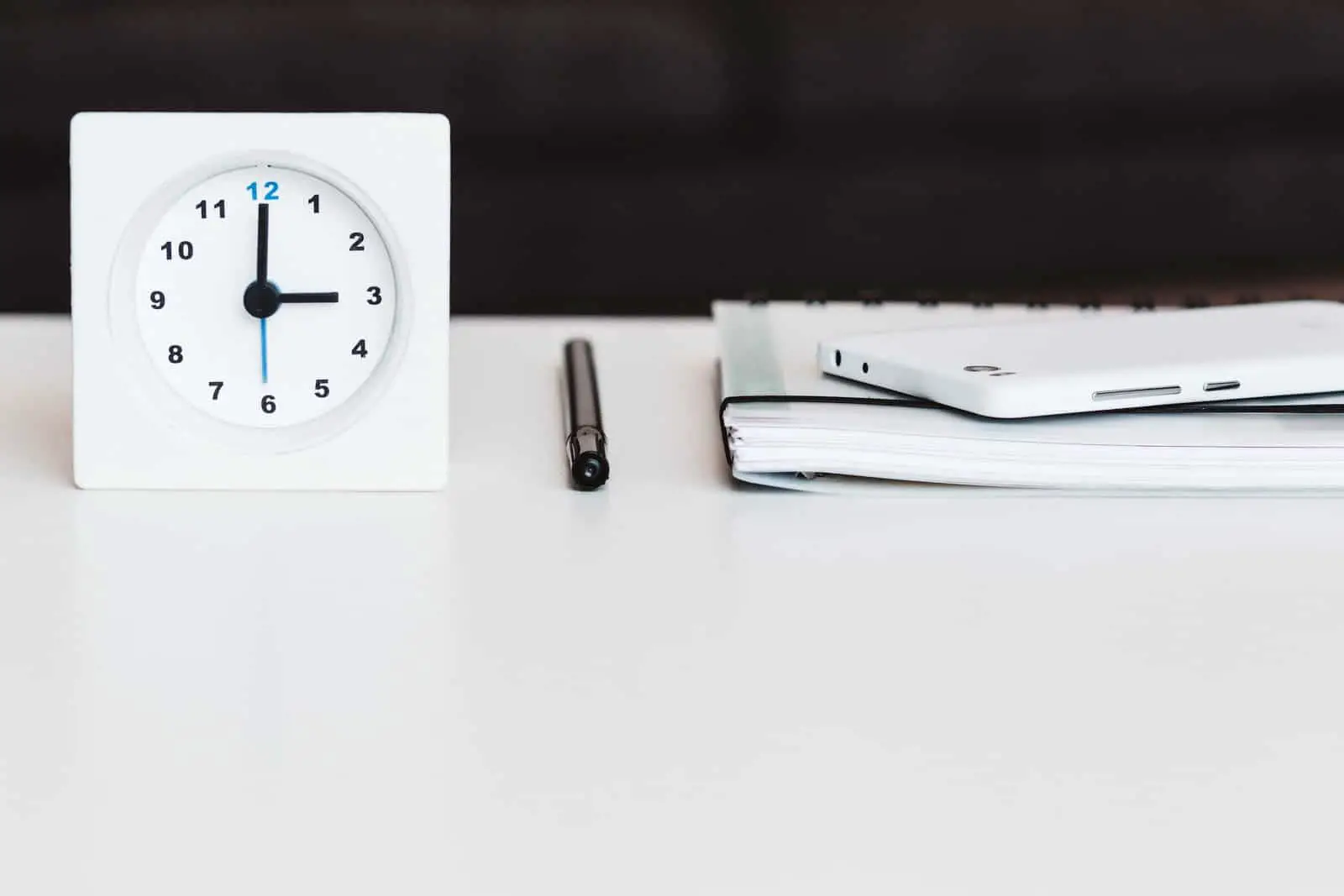As the name would suggest, work-life balance means you have a balance between your work life and your life outside of work. Though many people may recognize the importance of work-life balance, very few actually achieve it.
How to achieve a work-life balance? Time management is key. How you use the time you have will determine the work-life balance you maintain each day. Practice effective time management techniques that help you acknowledge what matters most to you, and practice those time management values every day. Unfortunately, many people find themselves stuck in a cycle where work holds more importance than their personal lives. Further, find a time-management technique that suits you. Set priorities and modify your environment to reduce distractions. Take action, and rest and recover when needed.
Data shows that approximately 66% of workers in the U.S. lack a work-life balance. Couple this with the fact that 88% of workers feel stressed out while on the job, and one thing becomes clear: work-life balance is the key to living a less-stressed and higher quality life.
feel stressed out while on the job, and one thing becomes clear: work-life balance is the key to living a less-stressed and higher quality life.
So why do many people lack work-life balance? A good reason might be that many simply don’t know the importance of work-life balance. They might not know just how detrimental a lack of work-life balance might be to their physical and emotional well-being.
The consequences of no work-life balance
The ways in which a lack of work-life balance can harm someone will varycourseby person. However, all ways are almost always related to increased stress. When you lack that equilibrium between your work and personal life, the effects can take a toll on your body and mind.
Consider the physical consequences. A lack of work-life balance can leave you constantly fatigued, with little to no energy to focus on what matters to you. Your body might get tense, causing muscle pains and spasms
There are also a number of emotional consequences from not having a work-life balance. The lack of proper rest can increase stress, making you more likely to develop depression and anxiety. Together, the emotional and physical consequences can do twice as much harm, leaving you feeling completely burned out.
Time management tips for work-life balance

Time management plays a major role in helping you achieve work-life balance. It’s important simply because how you manage your time will determine whether you achieve said balance or not. In other words, when you are intentional with your time, work-life balance is easier to achieve.
Given this knowledge, the best way to start working towards work-life balance is to practice time management techniques. The right techniques will not only show you where your time is going on a daily basis, but they will also help you free up more time for you to focus on what truly matters to you.
Determine your responsibilities
The first step in achieving work-life balance is determining just how much you have to do in a day. Knowing the work and personal tasks you are responsible for helps you understand where most of your day is going, as well as figure out whether you’re taking on too many responsibilities.
To start, take a piece of paper and draw a line down the middle, making two columns. The first column will be for work-related responsibilities, while the second column is for personal responsibilities. Next, list out all the work-related responsibilities you are in charge of on a daily basis. Do the same with your personal responsibilities column.
Once you do this, you will be able to see your day in a nutshell. Are you managing way too many responsibilities? Are there any responsibilities you can remove? If so, think about the chances you have for delegating the responsibility to someone else or removing it altogether. The idea is to have only the things you have to do on a daily basis.
Determine your priorities
Once you list out your responsibilities, you can list out your personal priorities. This is where you take the time to think about what matters most to you. Your priorities can be work-related just as they are personal. The goal for this step is to understand what you want to do with your time.
Take the answers from the previous step and compare them to your priorities. Do your responsibilities align with what matters to you most? If they don’t, what are your options to improve this issue? What can you do to dedicate more time to your priorities? Keep these questions in mind as you move toward the next step.
Set personal and professional goals
Just as you divided and listed your responsibilities, do the same for your personal and professional goals. Think about all the things you want to do and what end goal you’re trying to achieve. The idea for this step is to prepare you to start taking more control of your time by acknowledging how you’d like to use it.
In the same manner as your responsibilities list, divide your goals by personal and professional. The key to achieving work-life balance is to be mindful of how you use your time, and to turn this mindfulness into an action plan that centers on your life goals.
Make a plan
This is the step where all your preparation will come together. Now that you are fully aware of what you have to do, what you’d like to do, and where you want to go, you can turn this information into a solid plan that guides you on a daily basis.
To start, think of your day as a blank slate free from any responsibilities or tasks. You can create an empty schedule that divides the day by hour, starting when you wake up and ending when you go to bed. Next, add in the tasks you have to do into your schedule. Make sure that your daily professional responsibilities align with your professional goals.
Once you add your responsibilities, how much time do you have left? Work with that time and consider your personal goals and priorities. List them out by order of importance if you need to. Finally, finish your daily plan by adding in the most important tasks that relate to your goals and priorities. Try your best to create a daily schedule where work, rest, and personal time have equal importance.
Find your technique
If you find that scheduling out your day isn’t quite enough to meet your time management needs, try finding a technique that works for you. There are countless time management techniques that can help you find that work-life balance. Some of these techniques are:
• The Pomodoro
• The Important-Urgent matrix
• The Pareto analysis
• The Getting Things Done (GTD) technique
Try them out and notice what works for your needs. Since you already know what your responsibilities, priorities, and goals are, implementing these techniques should be much easier for you. If you find a technique that works, stick with it and notice the benefits it brings you toward your work-life balance goal.
Modify your environment
Your environment plays a big role in your productivity, and as a result, in your time management skills. If your environment is full of distracting objects or tools, you may find yourself using up more time than is necessary to complete your tasks. This makes it difficult to achieve a work-life balance.
To counteract this problem, make sure that when you sit down to complete your responsibilities and tasks, all distracting and unhelpful items are far removed from you. Items such as your cell phone can distract you and cause you to waste time. Ensure that your work hours are dedicated to work only by removing distractions. This will make you a more efficient worker and opens up more time for the things that matter to you.
Take action
When faced with a work-life balance related issue, the best approach to take is a solution-oriented one. If you acknowledge your problem but don’t take action, there is little you will do to resolve it. This will make you waste valuable time and worsen your work-life issue.
Strive to be a constant learner that takes action the moment a problem arises. For work-life balance issues, this can mean taking a time management class , learning a new skill, or simply talking with someone you trust. The idea is to maintain a problem-solving attitude that helps you notice and act when an issue arises.
, learning a new skill, or simply talking with someone you trust. The idea is to maintain a problem-solving attitude that helps you notice and act when an issue arises.
Rest
This is perhaps one of the most important elements of achieving work-life balance. The importance of rest cannot be understated, as it is the key to achieving the equilibrium between your work life and your personal life. To achieve this goal, the approach of ‘rest when you can’ simply does not work. Rest needs to be a priority.
To help yourself rest more often, be mindful of how you feel physically and emotionally at all times. Your body and mind will give you clear signs of exhaustion, and listening to them will avoid future burnout. Resting is important to managing your time effectively, as burning yourself out wastes more time than simply resting when you need to.
Key takeaways

When it comes to achieving work-life balance, time management is key. How you use the time you have will determine the level of balance that you maintain each day. Unfortunately, many people find themselves stuck in a cycle where work holds more importance than their personal lives.
The best way to solve this serious problem is to practice effective time management techniques that help you acknowledge what matters most to you, and practice time management according to these values. Each of the time management techniques mentioned here will help you achieve just that.

